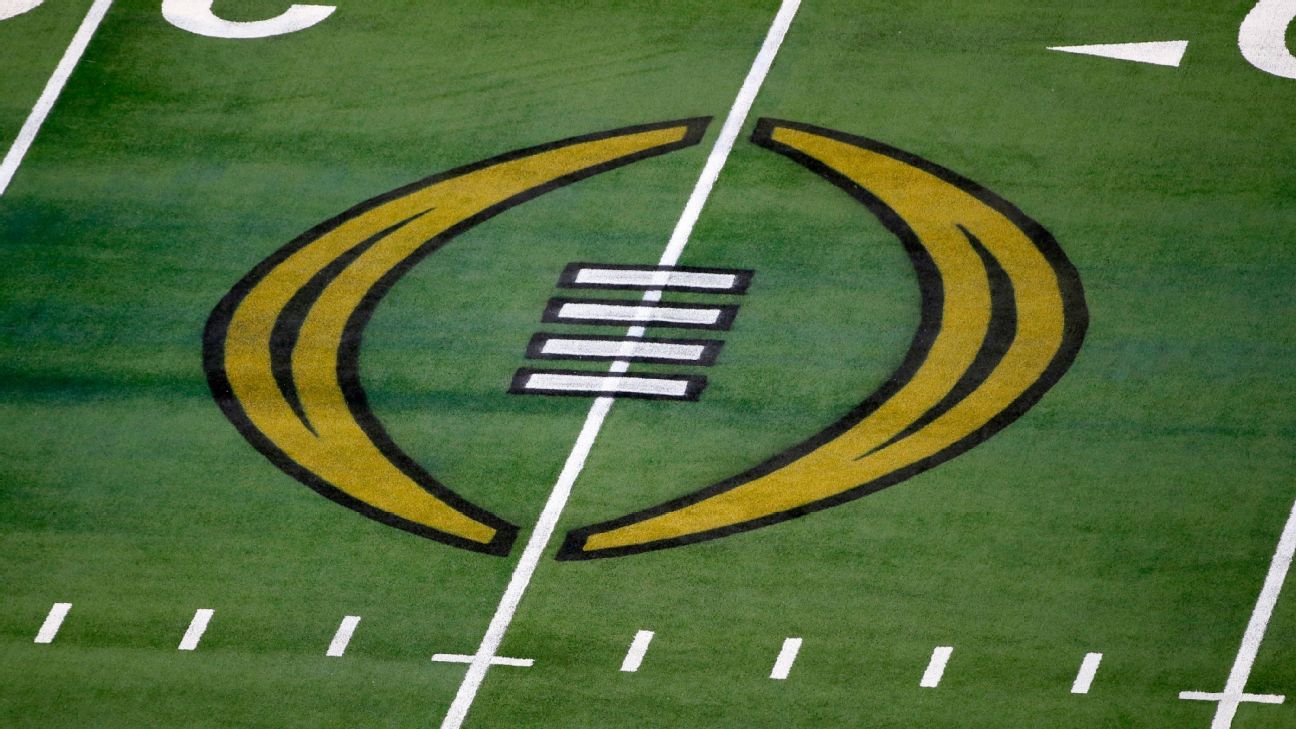
ROSEMONT, Ill. — The College Football Playoff management committee shelved any talk of format changes to the expanded 12-team field that will begin next season, opting instead to continue to wait to see what the future of the gutted Pac-12 will look like, CFP executive director Bill Hancock said Wednesday.
Following another summer of sweeping conference realignment, only Washington State and Oregon State will be left to determine the future of the Pac-12 in 2024 and beyond. The NCAA gives conferences a two-year grace period when they no longer meet membership requirements before changes are needed, but the notion of a two-team league competing in the CFP has its decision-makers in a holding pattern on the future format.
Hancock, who has spent five decades in college athletics, called it “the most unthinkable” scenario.
“One thing that happened that I never would’ve dreamed would ever happen, happened,” Hancock said. “… It’s totally weird and everybody knows it.”
Hancock also said that just because there’s never been a two-team conference “doesn’t mean there can’t be.” He wouldn’t speculate on whether the CFP would still recognize the winner of a two-team league.
Pac-12 commissioner George Kliavkoff, who attended the meetings but didn’t speak to reporters, participated in votes “on everything relevant to this season,” Hancock said. There’s still a possibility the Mountain West schools merge with the Pac-12 to try to benefit from its brand and possible assets, but that opens the controversial and subjective question of whether the Pac-12 would still be considered a Power 5 conference, which gets the benefit of 80% of the CFP revenue. The Group of 5 schools receive 20%.
According to the NCAA bylaws, an FBS conference needs at least eight full FBS members that satisfy all bowl subdivision requirements. A conference’s status as an autonomy conference is determined by the Division I board of directors.
Notre Dame athletic director Jack Swarbrick said the CFP’s management committee hasn’t discussed the potential FBS status of the Pac-12 — with or without a Mountain West merger.
“We haven’t spent any time on it,” Swarbrick said.
The bulk of the two-day meetings at the Big Ten headquarters, Swarbrick said, were spent listening to potential television partners. ESPN is currently the sole rights holder through the current 12-year deal, which expires following the 2025 season, and it has first rights to the new first-round games, which will be held on campuses. The general consensus amongst the CFP leaders, though, is to have multiple broadcast partners when the next contract begins.
Hancock said five television companies sent executives to make presentations, and “four or five others have expressed interest, and that streaming is an option.
“Streaming adds another element,” Hancock said. “We are not averse to streaming some of the games. I wouldn’t expect us to stream all of them, but right now nothing’s off the table.”
The question is if they will change the format again before the end of this contract.
There have been discussions amongst the commissioners privately over changing the currently agreed upon model of 6+6, which rewards the six highest-ranked conference champions plus the next six highest-ranked teams.
If the Pac-12 dissolves, or loses its status as a Power 5 conference, keeping a 6+6 model for the next two years would allow guaranteed access for two Group of 5 champions. The current model was agreed upon before realignment decimated the Pac-12. If the Pac-12 folds, sources have indicated to ESPN there is a strong preference to change the model to 5+7, meaning the five highest-ranked conference champions plus the next seven highest-ranked teams.
For the format to change in time for the 2024 season, though, it would have to be unanimous, and American Athletic Conference commissioner Mike Aresco on Wednesday said he will currently vote against changing the current contract.
“[I] will vote 6-6 for now,” Aresco said. “If a nuanced proposal that is different should develop, I would consult with my conference membership.”
While the format remains a question, the group pressed on with solidifying other details, such as approving the start of searching for the next host cities following Houston, Atlanta and Miami.
There are still other more immediate details to determine, but Swarbrick said there’s no question the CFP will be ready to implement the 12-team field in time for the start of the 2024 season.
“We’re on track to implement two years early, which is great,” Swarbrick said. “Yeah, there are details to be worked out. Some of them are painstakingly small details and others are big details, but we’re on track. No one thinks we’re not going to expand in [years] 11 and 12.”










